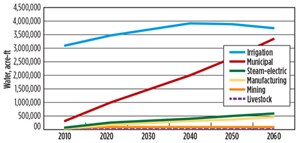Energy issues
Houston is an oil town. It is not surprising, therefore, that the local newspaper, the Houston Chronicle, carries a good deal of oil and gas news. Lately, the headlines alone are enough to drive one to serious drink:
- “Oilfield service firm’s profits decline”, July 22
- “Revisiting sub-$50 oil; Rising stockpiles and higher production pull the rug out from under crude, raising the prospect of more layoffs”, July 23
- “Texas wells produce at record pace; but economist calls the outlook for oil prices ‘increasingly bearish’”, July 28
- “Energy giants to cut deeper”, July 29
- “Oilfield service companies struggle to survive the bust”, July 29
But, all is not doom and gloom. There are things to actually brag about. You can find these things in less prominent headlines. One, coming from Marketwire on July 22, notes that “Fortress opens $9.3-million Eagle Ford shale saltwater disposal well to provide hydraulic fracturing industry with an environmentally friendly site to pump produced water back to its source.” That is a bright spot, something to brag about. It is also a lead-in to a larger discussion of the industry’s increasingly strong record in water management.
Our industry had been continually, and heavily, criticized for failure to manage water responsibly. Some time ago, that was a valid criticism in some areas. But, that was some time ago. Now we can brag. And that is important since the supply of clean water is the single largest issue facing the world today. Earth has a finite supply of water, in liquid and vapor forms. For 99.9% of human history, the global water supply and the human race had a symbiotic relationship. But, along came the industrial revolution and with it, an explosion in population. The world population reached one billion around 1830. It is now closing in on eight billion and is projected to reach 10 billion by 2050. That’s 10 times more people and zero times more water in a little more than 200 years. Concurrent with the increase in population has been the dramatic increase in energy consumption, which, in some instances, is water intensive. The question then arises, are the energy industries—in particular, oil and gas, which make up well over half the world’s energy supply—to blame for the emerging water crisis? The answer is no, for two reasons.
The most dramatic impact of the population increase has been the need to feed all of those extra people. That has required a massive increase in agriculture and agricultural efficiency. And that is directly tied to the astronomical increase in irrigation (see graph).

For all energy industries, the percentage used (green and orange lines combined) is approximately 12%. For oil and gas (included in mining, with coal, orange line) the percentage is less than 3%. Irrigation, on the other hand, claims approximately 70% of all freshwater used in the state of Texas. And these figures are from Texas, with the highest hydraulic fracturing rates in the U.S.
But the lack of clarity about the percentage of water used by the industry is only half the story. When it comes to environmental stewardship, the industry has made major strides in the last decade in technologies to clean and recycle both produced and frac flowback water. A number of these projects are already commercial or in final trials. Among those is an evaporation/condensation water technology developed by Altela, Inc. that, in field tests, converted 77% of each barrel of water treated to pure distilled water at an average cost per barrel that was 20% lower than the conventional disposal cost and resulted in a significant reduction in truck traffic to haul water to distant disposal wells for injection. The technology has been commercially installed in the Marcellus shale play.
Other developing technologies include: a low-cost mobile process to treat the total dissolved solids (TDS) portion of flowback water in fracturing operations in shale gas plays by GE Global Research; a pretreatment and water management system for frac water reuse and salt production, also by GE Global Research; and a mobile pretreatment technology to allow reuse of flowback and produced brine in shale gas plays by Texas A&M University. These water cleanup technologies represent a portion of the work in water cleanup funded, in part, by the National Energy Technology Laboratory of the U.S. Department of Energy. Additional work has been carried out by industry, academia and government agencies around the world. The list of projects would be far too long for this column. As a result of these technologies, water reuse to frac wells has increased dramatically, and it is possible to clean up most produced/flowback water to potable standards.
So I say, let us take pride in what we have done and are trying to do to save the world’s water supply, while reminding everyone, who will listen that we are not even close to being the biggest contributor to this problem. ![]()

- Applying ultra-deep LWD resistivity technology successfully in a SAGD operation (May 2019)
- Adoption of wireless intelligent completions advances (May 2019)
- Majors double down as takeaway crunch eases (April 2019)
- What’s new in well logging and formation evaluation (April 2019)
- Qualification of a 20,000-psi subsea BOP: A collaborative approach (February 2019)
- ConocoPhillips’ Greg Leveille sees rapid trajectory of technical advancement continuing (February 2019)


